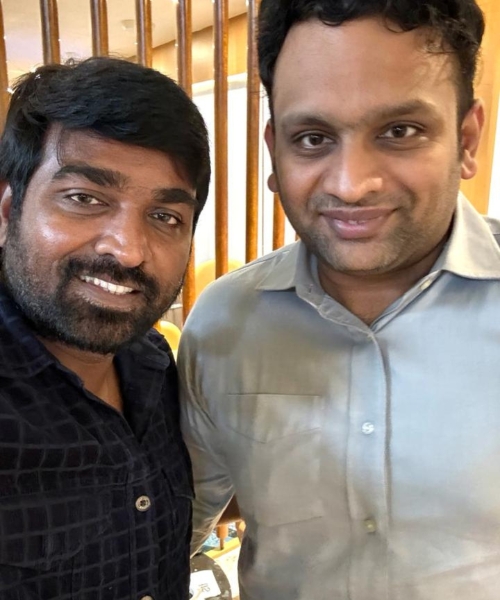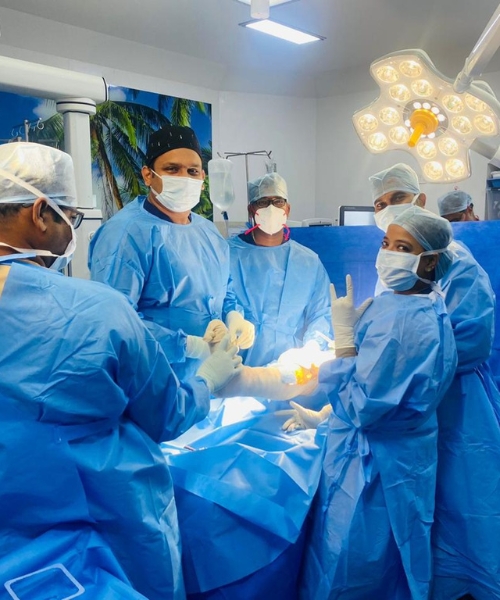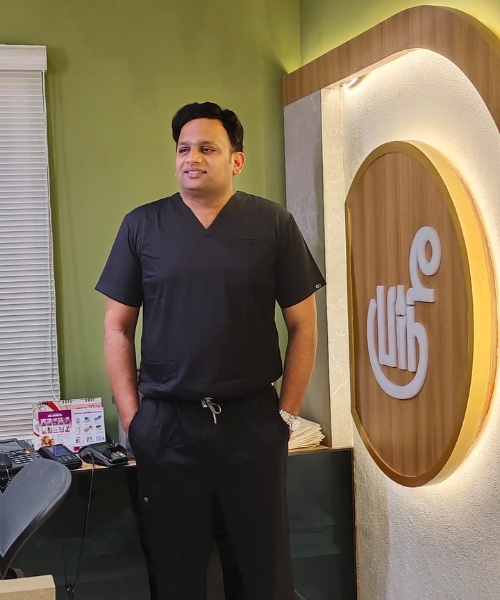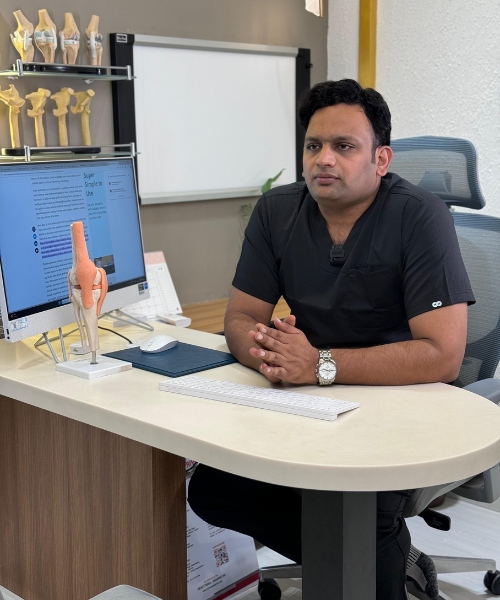Introduction to Ankle Pain
The ankle is the joint between the foot and the leg or the thin parts of the leg just above the foot. Ankle pain is due to any discomfort or pain affecting any ankle part. The ankle is often bent inwards because it causes small tears and ligaments.
Ankle pain can result from various causes, such as sprains, fractures, tendinitis, arthritis or gout. Proper diagnosis and treatment are required to prevent long-term complications and restore mobility and function affected to the ankle.
Anatomy of the Ankle
Joint of Ankle
The ankle is a synovial joint known for its high degree of mobility. It consists of a cavity in one bone that accommodates another bone, with slippery hyaline cartilage covering the bone ends. A synovial membrane surrounds the joint, filled with fluid to lubricate and protect it, minimizing friction during movement.
Functionally, the ankle operates as a hinge joint, similar to the hinges on a door. While some parts remain immobile, others move to allow the joint to flex and extend. The ankle can hinge in both directions, moving the foot up and down.
Bones in the ankle
- The tibia, also known as the shin bone, is the larger of the two lower leg bones.
- The fibula, or calf bone, is the smaller bone next to the tibia.
- The talus is a small bone between the tibia and fibula, forming part of the ankle joint.
Cartilage in the ankle
Cartilage is a resilient tissue that cushions and protects joints, serving as a shock absorber. The ankle is coated with hyaline cartilage, the most prevalent type in the body, often referred to as articular cartilage.
This type of cartilage covers joint surfaces and encases bone ends, facilitating smooth movement.
Hyaline cartilage’s smooth and slippery nature allows bones, such as the tibia, fibula, and talus in the ankle, to glide effortlessly over each other within the joint.
Ligaments in the ankle
The medial ligaments, also known as deltoid ligaments, comprise four ligaments originating from the medial malleolus at the base of the tibia. They extend to connect with the talus, calcaneus (heel bone), and navicular bones in the foot.
The lateral ligaments consist of three ligaments that originate from the lateral malleolus, the end of the fibula that forms the bony prominence on the outer side of the ankle. They connect to the talus and calcaneus.
Syndesmotic ligaments are a group of four ligaments that connect the tibia and fibula, providing stability to the ankle joint.
Muscle in the ankle
Muscles consist of flexible fibres that contract to pull and move body parts. Muscles play a crucial role in controlling ankle movements in the legs and feet.
Muscles responsible for plantarflexion enable the foot to flex downward, away from the body. These include:
- Gastrocnemius
- Soleus
- Plantaris
- Tibialis posterior
- Flexor digitorum longus
- Flexor hallucis longus
- Peroneus Brevis
- Peroneus longus
Muscles that control dorsiflexion allow the foot to move upward toward the body. These include:
- Tibialis anterior
- Extensor digitorum longus
- Extensor hallucis longus
- Peroneus Tertius
Nerves in the ankle
Nerves act as pathways for electrical signals between the brain and the body, facilitating sensation and muscle movement. The ankle contains several vital nerves, including:
- Tibial nerve
- Superficial peroneal nerve
- Deep peroneal nerve
Blood Vessels in the Ankle
Blood vessels are conduits that transport blood throughout the body, forming a closed loop that starts and finishes at the heart. The ankle receives blood supply from three arteries:
- Anterior tibial artery
- Posterior tibial artery
- Peroneal artery
Common Conditions Causing Ankle Pain
- Sprains
- Fractures
- Gout
- Tendinitis
- Arthritis
- Bursitis
- Tarsal tunnel syndrome
- Stress fractures
- Flat feet or high arches
- Achilles tendon rupture
- Peroneal tendon injuries
- Ankle impingement
Symptoms of Ankle Pain
- Pain
- Swelling
- Stiffness
- Instability
- Bruising
- Limited range of motion
- Tenderness
- Difficulty in walking or bearing weight
- Numbness or tingling
- Popping or clicking
Diagnostic Procedures
Diagnostic Procedures for ankle pain may include physical examination, X-rays, CT scans, MRI Scans, ultrasound and arthroscopy. These tests help determine the cause of pain by evaluating the bones, ligaments, tendons and other structures in the ankle joints.
Treatment Options
- Rest, ice, compression and elevation for acute injuries.
- Pain relievers and anti-inflammatory medications.
- Physical therapy to improve strength and flexibility.
- Bracing or splinting for stability.
- Corticosteroid injections for inflammation.
- Surgery for severe injury or conditions.
- Lifestyle modifications and supportive footwear.
- Alternative therapies like acupuncture or chiropractic care.
Preventive Measures
- Wear supportive shoes for physical activities.
- Strengthen ankle muscles with exercise.
- Warm up before exercising.
- Use proper techniques during activities.
- Avoid high-heeled shoes.
- Maintain a healthy weight.
- Address foot or gait abnormalities promptly.
- Gradually increase exercise intensity.
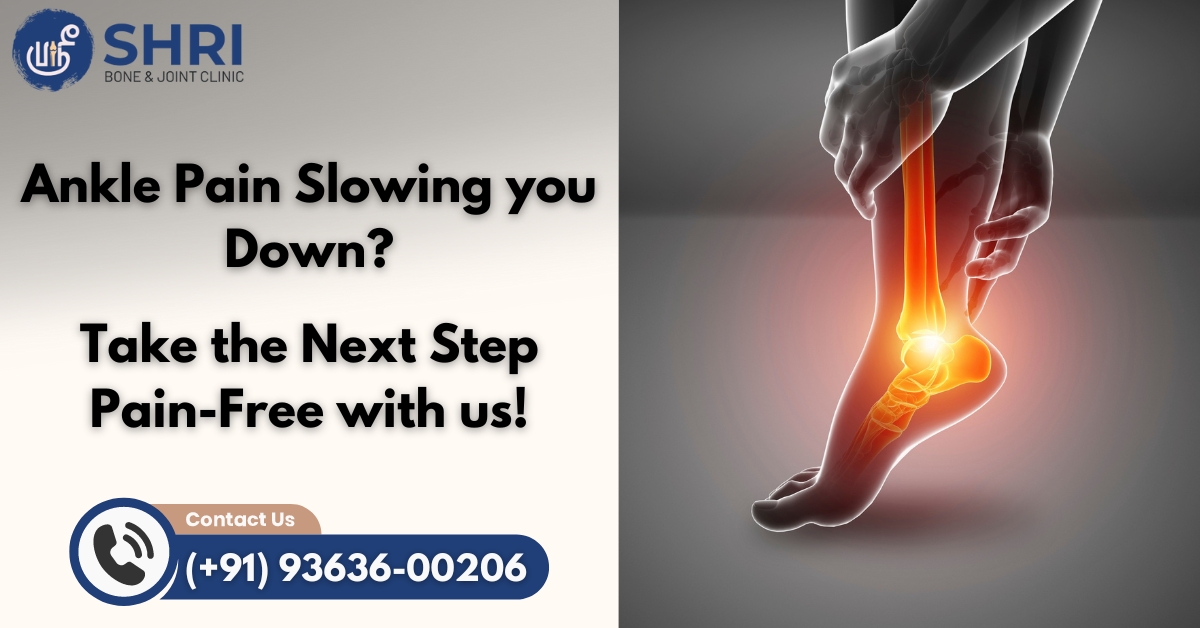
Rehabilitation and Recovery
- Rest: Avoid activities that worsen the pain.
- Ice: Applying ice packs to reduce swelling and pain.
- Compression: Using compression bandages or wraps to support the ankle.
- Elevation: Keeping the ankle elevated above heart level to reduce swelling.
- Range of motion exercises: Gradually increase movement to improve flexibility.
- Strengthening exercises: Building strength in the ankle and surrounding muscles.
- Balance and proprioception exercises: Improving stability and coordination.
- Gradual return to activity: Slowly reintroducing activities to prevent re-injury.
- Physical therapy: Working with a therapist to improve strength and flexibility.
- Pain management: Using medications or therapies to manage pain as needed.
Why Choose Shri Bone & Joint Clinic for Ankle Pain Treatment in Chennai?
Shri Bone & Joint Clinic is the best and most genuine hospital in Chennai. Here, we provide a top-notch treatment for ankle pain and all other knee-related problems. We have the best orthopedic specialist with over ten years of experience.
We have two branches in Chennai; one is from Adyar, and another one is from Aminjikarai. We are available 24 hours a day, so you can check the availability of the doctors and book an appointment before visiting us.
You can reach me at 9363 600 206 or 044 3549 0206 or 044 4524 2424. Here, we have accepted all kinds of emergency walk-ins. Get the best treatment at an affordable medical charge compared to other hospitals in Chennai.
Best Doctor / Specialist for Ankle Injuries Treatment in Chennai
Dr. Shriram Krishnamoorthy is the best doctor for Ankle pain treatment. He is a national board-certified orthopedist. He has more than ten years of experience in the orthopedic field.
Strain Ankle Treatment in Chennai
A strained ankle involves stretched or torn ligaments, causing pain, swelling, bruising, and difficulty walking. Treatment includes rest and rehabilitation. To get top-notch treatment for a strained ankle, visit Shri Bone & Joint Clinic in Chennai.
Torn Ligament in Ankle Treatment in Chennai
A torn ligament in the ankle involves partial or complete tearing of ligament fibres, leading to instability, swelling, and pain. Get the best treatment from Shri Bone & Joint Clinic in Chennai for the Torn Ligament in Ankle.
How do I know if my ankle pain requires medical attention?
Seek medical attention for ankle pain if it is severe, persistent, swelling, instability, or impaired walking.
Can arthritis cause ankle pain?
Yes, ankle pain can be caused by various types of arthritis, including osteoarthritis, rheumatoid arthritis, and post-traumatic arthritis.
What should I do immediately after injuring my ankle?
After injuring your ankle, follow the RICE protocol: Rest, Ice, Compression, and Elevation. Seek medical attention if severe pain or swelling occurs.
How long does it take for a sprained ankle to heal?
The time it takes for a sprained ankle to heal varies but typically ranges from a few weeks to several months.
When should I consider seeing an orthopaedic specialist for my ankle pain?
Consider seeing an orthopedic specialist for ankle pain if it is severe, persistent, or significantly impacts your daily activities.
What diagnostic tests are typically used to evaluate ankle pain?
Diagnostic tests for ankle pain may include X-rays, MRI scans, CT scans, ultrasound, and physical examination by a healthcare professional.
Is surgery necessary for all types of ankle pain?
Surgery is not necessary for all types of ankle pain and is typically considered when conservative treatments have failed.
How long does it take to recover from ankle surgery?
Recovery from ankle surgery varies but may take several weeks to months, depending on the procedure and individual healing.
Can ankle pain be prevented?
Ankle pain can be prevented by wearing supportive shoes, strengthening ankle muscles, warming up before exercise, and using proper techniques.
What are the risks of untreated ankle pain?
Untreated ankle pain can lead to chronic pain, instability, joint damage, and difficulty walking or performing daily activities.
Better Health Care is Our Mission
Phone
Shri Bone & Joint clinic
#1, 2nd Main Road
Nehru Nagar
Adyar
Chennai - 20.
Phone: 044 3549 0206
MGM Healthcare
No.72,
Nelson Manickam Road,
Collectorate Colony, Aminjikarai,
Chennai - 600029.
Phone: 044 4524 2424




